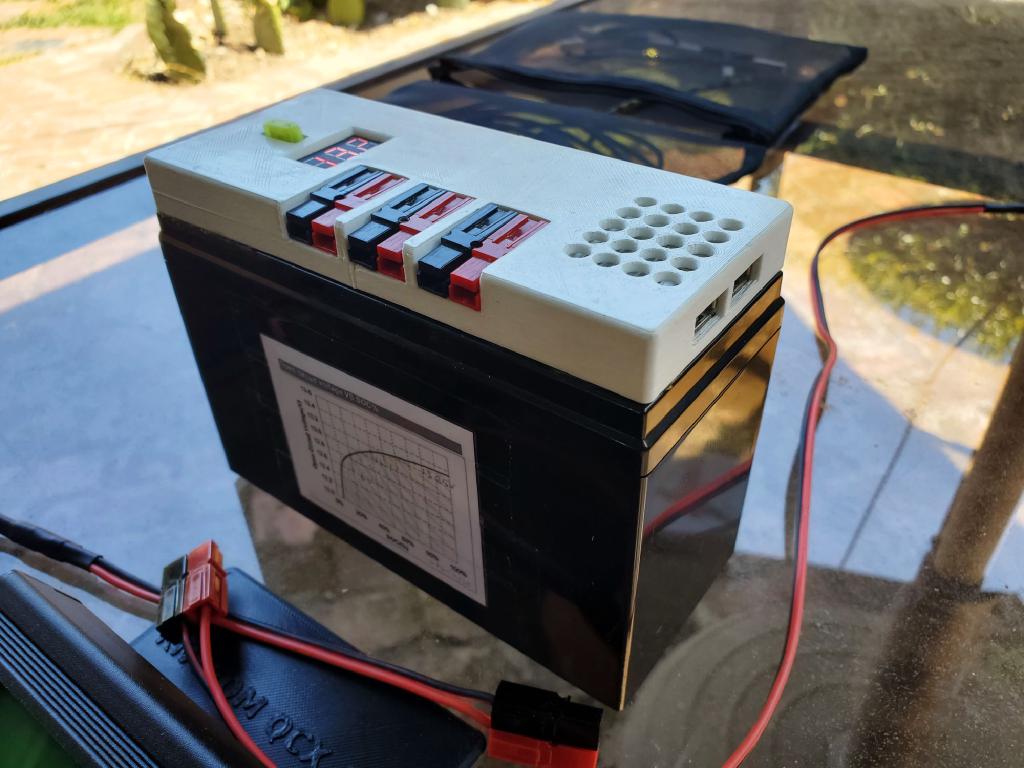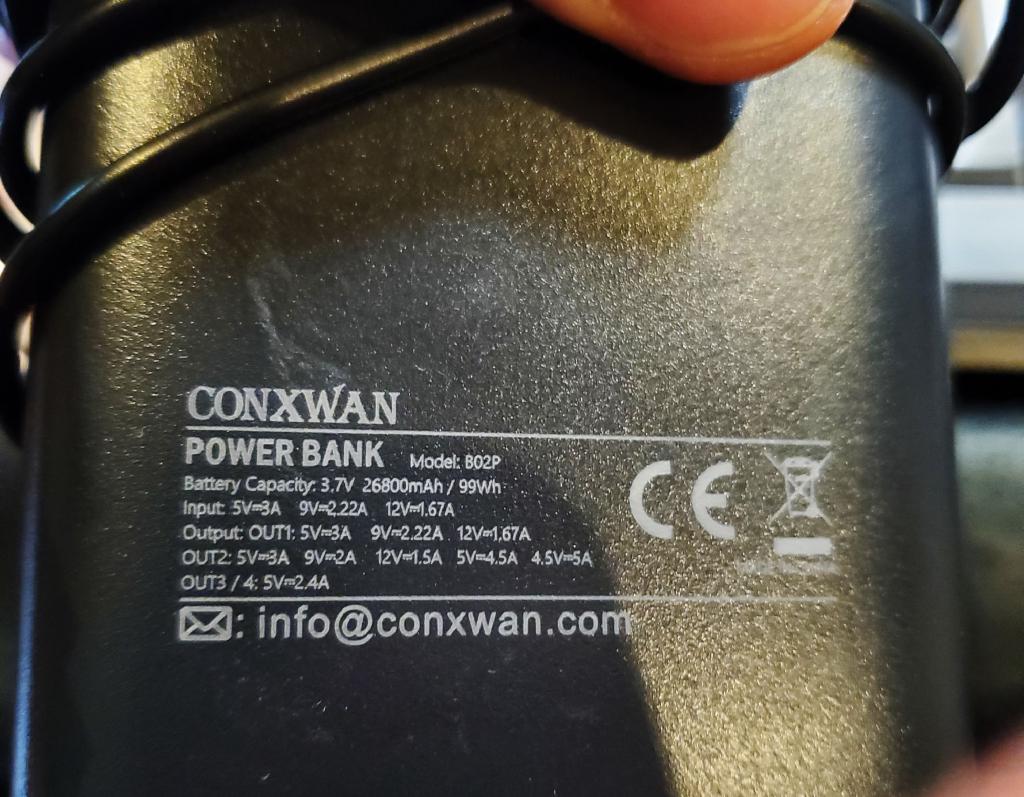
Amateur Radio’s Field Day 1 is the last weekend of June. And this year it was my deadline to build and get my HF QRP station on the air. I’ve been working towards this goal on and off, slowly but surely for over two years. While SSB and digital modes are interesting, I found the basic low power CW and minimal equipment to be fascinating.
The Goal
When I resumed Ham Radio activities in early 2024, I set my sights on CW, QRP and very portable operations. I wanted something that I can pack in between clothes in a travel bag, something I can setup anywhere on short notice and make contacts hundreds of miles away. While at it, I wanted to learn and not buy my way into this goal.
5W QRP CW was my target.
Projects and sub-projects
Antenna
I selected the EFHW 2 antenna design and built my own. To set it up I used a 24ft finishing rod I already had, which I also use for fetching quad-copters stuck on trees. I modified it by designing an antenna isolator to pass through the peak of the inverted-V and use velcro straps to affix it.
Since I needed 5W QRP only, I used a lightweight 26awg stranded wire with hi-viz red silicon insulation and even made my own wire winder. The 49:1 transformer is from a kit by KM4CFT and I used bullet connectors to plug it into the antenna. Feed line is RG174 with a choke.
When I was building it, I didn’t have an HF radio, but I tuned it for 1:1 SWR using NanoVMA. At that time, I was just listening on 40m band using an SDR.


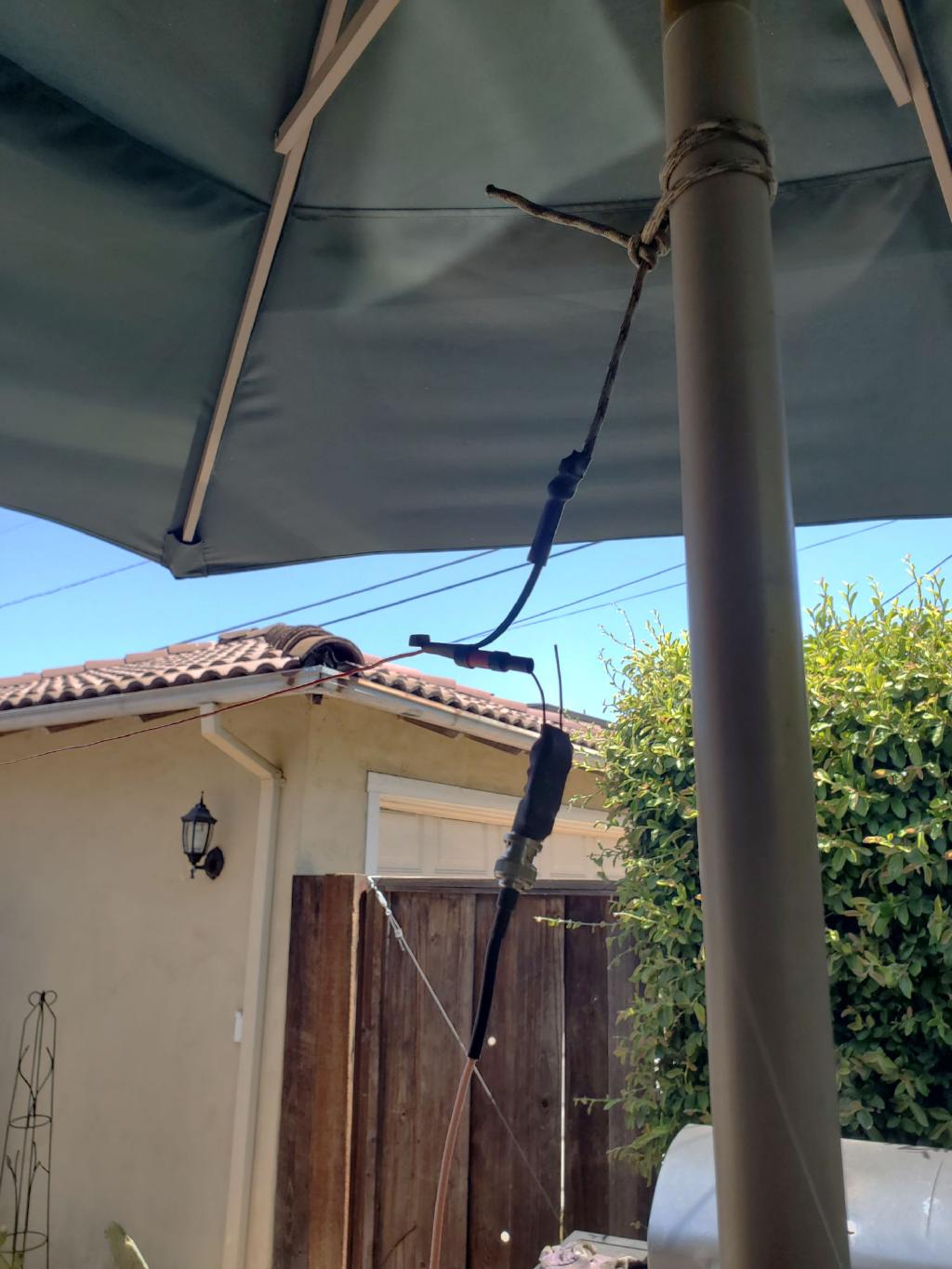
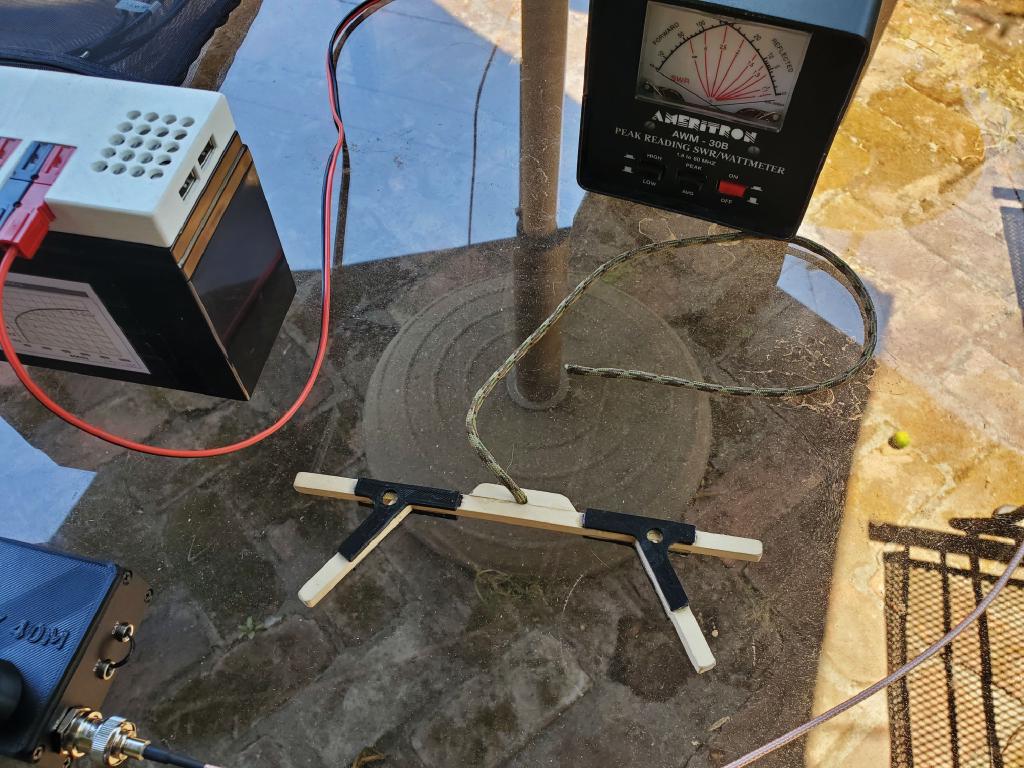
Power
I built a 120Wh LifePo4 based power supply with panel of my own design attached directly to the top of the battery. It has an on-off switch, volt meter, 20A fuse, 3x Anderson Power Pole connectors and 2x USB fast charge ports. I use it for camping and even have 12V DC laptop charger and MPPT Solar panel setup for it.
As an even more QRP friendly power option, I learned that USB power banks with PD 3 port can supply 12V DC to a barrel plug. Turns our my power bank was already capable and could deliver up-to 1.67A at 12V (plenty for QRP).
Paddle
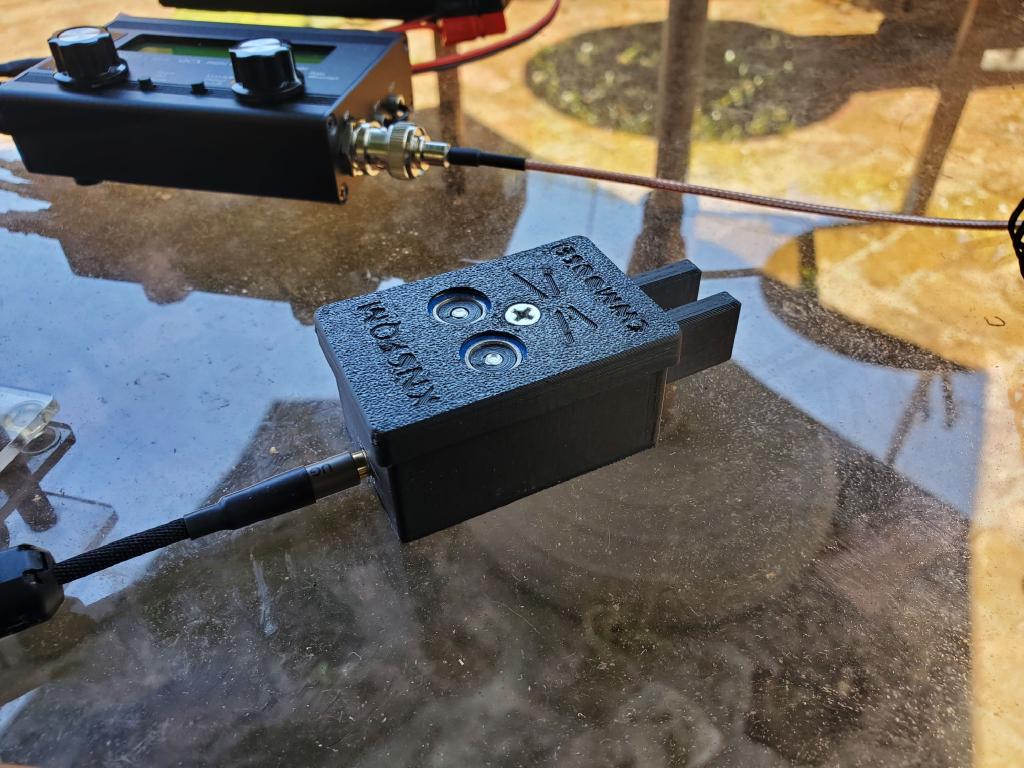
While I was transceiver-less, building antennas, tuning, SDR listening, I was learning CW. I’m still learning CW, certainly learning to hear, but I can send half decently now at 25wpm. I went through various paddles and once I reached the $150 price point while still disappointed, I designed my own.
I call it CWMouse. It uses mouse micro switches and ball bearings for smooth movement. For keyer, I’m so accustomed to the very customizable Morserino-32, that I find other keyers not responding well to my inputs. I’m sure it is me, but for now I just use the Morserino.
Transceiver
In early 2025, after proceeds from CWMouse paid for this hobby, I bought QRP Labs QCX-mini kit on 40m and this month finally built it. I finished one week before the Field Day!
The build was very satisfying with excellent instructions. I did make a few mistakes, such as soldering a pin-header on the wrong PCB side, and swapping some sockets for headers, but otherwise it went smoothly. Everything is very tight in the mini and requires full disassembly for any re-tuning - now I understand why people opt to build the full case single board versions :)
In order to get maximum power I bought second-hand AWN-30B power meter and tuned the QCX windings for maximum output. At 13.2V I’m getting 5.6W, while with the smaller lighter weight 12.0V power bank I output 4.8W \o/
To protect the screen, I designed a magnetic cover - much like that which is available for other QRP radios. Nobody offers one for QCX, probably because there aren’t ferrous screws on the front. There is an internal ferrous frame around the LCD and with strong enough magnets I got the cover to stick.


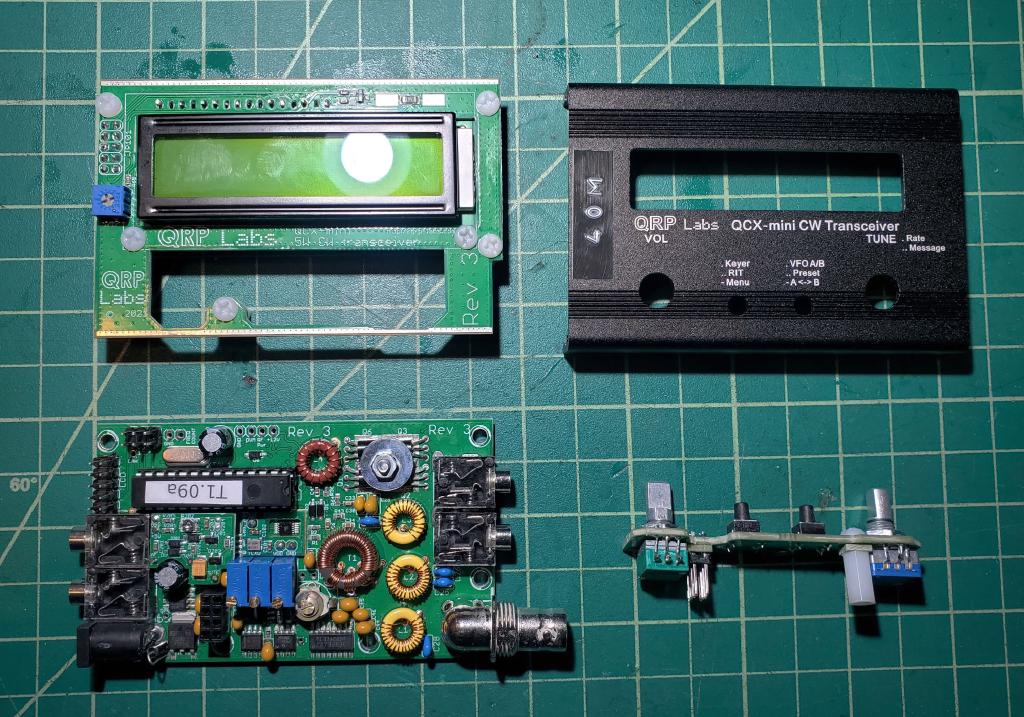
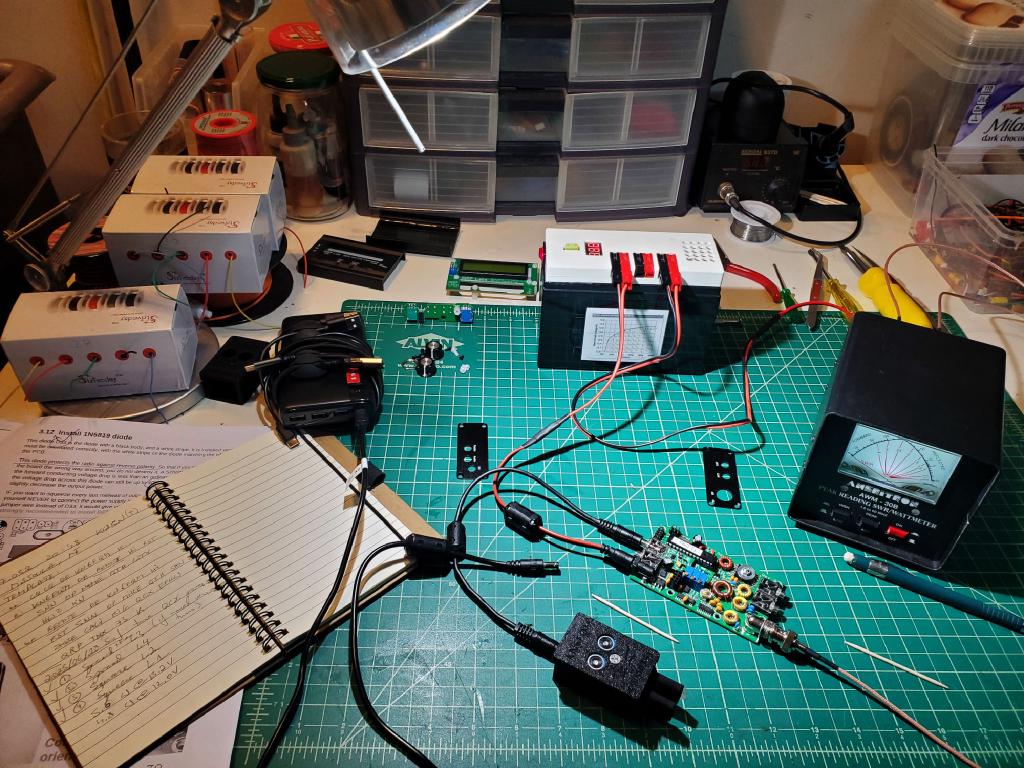

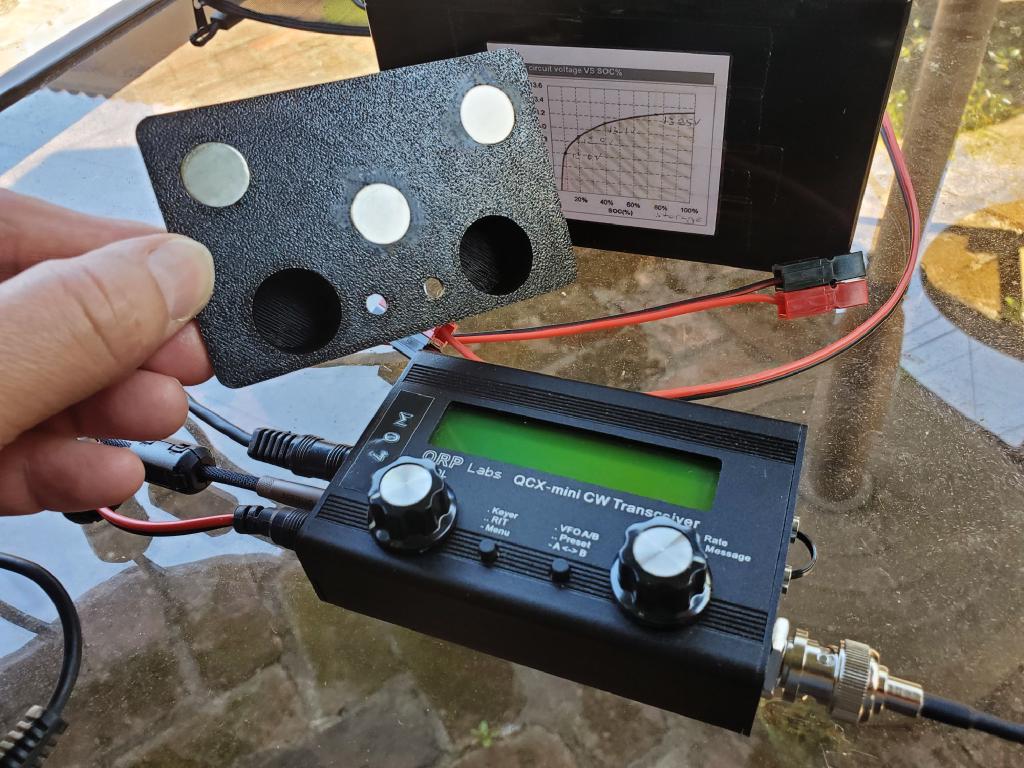
Next Steps
I have a few quirks to work out of my QCX.
There is a problem with the controls board where after first assembly, it made intermittent button contacts, while on a later re-assembly, it is making clicking noises when touching right knob or right button (but not left!!). I suspect this is a bad connection or solder joint somewhere around the 4x2 header. It could also be that boards are making contact with components, or case, when operating the right side controls. Careful investigation and kapton tape should resolve it :)
There is more equipment kits in my queue, I want to make use of JS8 again, but I really really need to get on the air and make contacts every week!
Summary

I built, crimped, soldered, assembled, tuned or designed most of the equipment on this table. It works, RBN 4 shows I’m getting picked up 600-1200 miles away on 5W and I can hear everything that local WebSDR 5 station can. It was a fun journey getting here.
-
Field Day is an annual event for amateur radio operators where participants set up temporary radio stations to practice emergency communication skills and demonstrate ham radio’s capabilities. ↩︎
-
EFHW - End Fed Half Wave - an antenna which is connected to from an end-point instead of the middle, making it very easy to setup. ↩︎
-
PD - power distribution, a mode in USB3 power devices where a DC voltage can be provided on demand, 4.5V, 5V, 9V, 12V, 19V are some of the possible voltages. 12V is perfect for QRP Ham Radio :) ↩︎
-
Reverse Beacon Network - a network on internet connected radio receivers that record stations they heard. They allow observing range of one’s own transmissions. ↩︎
-
Web SDR - a network of internet connected radio receivers that allow users from internet to receive as if they were physically at that receiver. They allow voice, digital or CW reception of signals on one’s computer. ↩︎
